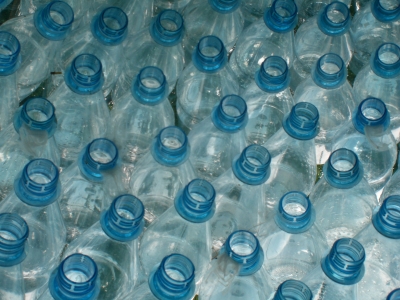This target voted by the European Parliament on 24 October is instrumental in the achievement of the objectives of the Single Use Plastics (SUP) Directive and in igniting the much supported transition towards a more circular economy. It would be a historical step, correcting a much overdue market failure to not value recycled material more while unlocking much needed investment in collection and recycling.
In July 2018, a broad coalition of 34 industry organisations, local authorities and environmental NGOs released a statement, underlining the necessity to introduce requirements for mandatory minimum recycled content targets for plastics. Under the framework of the SUP Directive, the amendment adopted by the European Parliament setting a 35% target of recycled plastic content in beverage bottles by 2025 is a vital, and absolutely achievable, step towards circularity.
Of the 25.8 million tonnes of plastic waste generated in Europe every year, less than 30% of such waste is collected for recycling. Demand for recycled plastics today accounts for only around 6% of plastics demand in Europe. Among the numerous negative impacts, failing to collect plastic waste directly contributes to the loss of valuable resources, leaving Europe in a vulnerable position, unable to meet demand without sufficient flows of input materials. This is the case for recyclers of PET (polyethylene terephthalate) drinking bottles in Europe, whose recycling capacity exceeds the amount of waste currently processed. There is – looking at the material wasted/dumped/littered today – substantial room for capacity increase provided the regulatory framework offers the certainty needed for recyclers to invest.
Setting a mandatory recycled plastic target for beverage bottles, where food safety considerations are fully complied with, will immediately have positive knock-on effects on improving and increasing the collection rate of these SUP and is hence vital in achieving the 90% collection target set by the Proposal.
The minimum target of 35% for recycled plastic in beverage bottles voted by the European Parliament is a key contributor, as acknowledged in the report, for the creation of a steady market for recyclates, and will ensure a more circular use of plastics. Together with the need to better design packaging items so that they are fully recyclable, this recycled content target will send the strong signal needed:
To boost the offer of recyclable plastics and the demand of recycled plastics. To provide operators with the necessary certainty they need to make significant investments in recycling technologies. Indeed, up to € 10 billion worth of investments will be needed in the waste management and recycling sector to innovate and expand the separate collection, sorting and recycling capacity for all plastics at EU level. To take advantage of China’s import restrictions on plastic waste by making Europe the leader in fighting marine litter from SUP thanks to measures closing the entire plastics loop, namely: prevention, proper management, recycling and use of recycled content in plastic beverage bottles.
Until now, no measures have been taken at the EU level to pull the demand for recycled materials and complete the second half of the cycle in a more circular economy, unfortunately an unfulfilled ambition of the revised waste package. Over the last decades, European legislation has predominantly focused on the (waste) supply side by setting collection and recycling targets, if we aim to increase plastics recycling further that will not be enough going forward.









